Aspidiophorus paradoxus
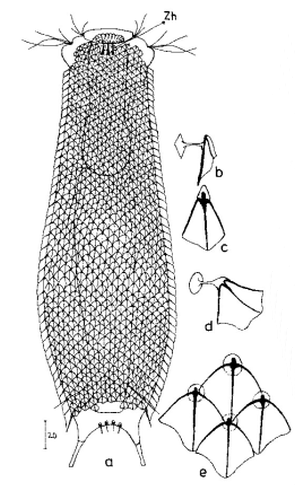
245 µm - 326 µm
Width:
85 µm - 95 µm
Width of the head ( five-lobed ):
60 µm - 65 µm
Width of the neck:
50 µm - 56 µm
Length of the furca:
32 µm - 38 µm
Adhessive tubes:
66% of furca
Pharyx ( cylindrical, somewhat swollen at ends ):
76 µm - 85 µm
Diameter of the mouth ( around ):
unknown
Dorsal scales:
25 rows of 40-45 rhombic petiolar scales each with lateral and median keels (4x6 µm); petioles 6-7 µm; terminal plates of last terminal rows often enlarged (12-17 µm); posterior end free; between toes 4 short spines on oval scales.
Ventral scales:
Ventral innerciliary field covered with petiole scales
Oecology:
Sludge dweller
Similar species:
distinctive, variable type
Particularities:
3 teeth, eggs smooth (125x74 µm)
Fundorte:
Aspidiophorus paradoxus is the largest Aspidiophorus species with about 300µm length.

Dorsal scales
The entire animal is covered with relatively large rhombic peduncle scales.
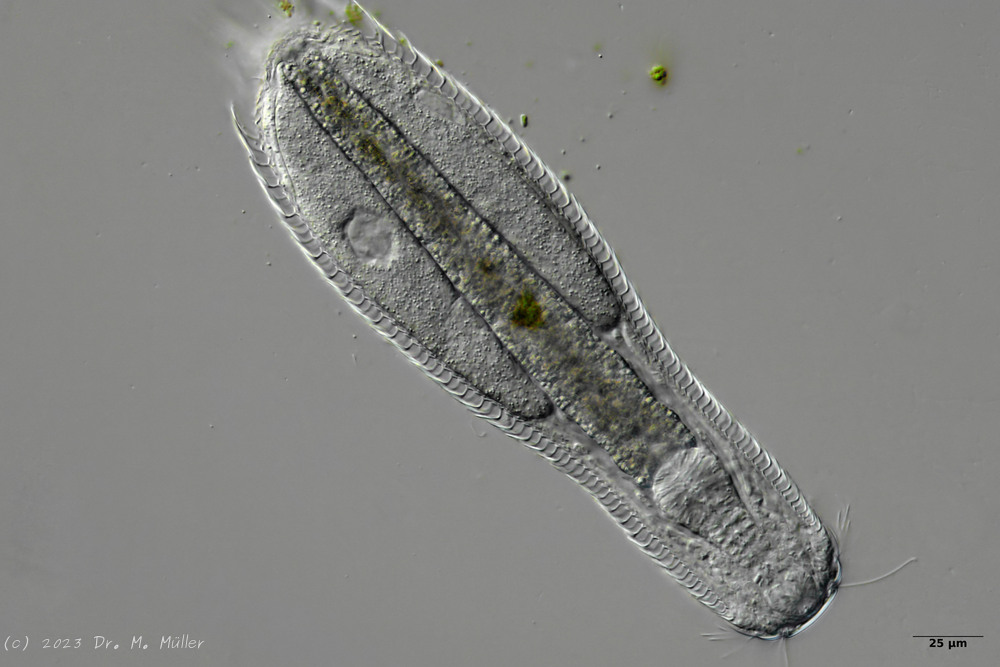
Cross section
In cross-section, the structure of the petiole scales is clearly visible: the scales sit with a small base plate on the cuticle of the animals, from which rises a thin, hollow pedicel. At the end of the peduncle sits a rhombic terminal plate, with a central keel. At the posterior end of the animal, the terminal plates of the last row of scales are enlarged.
The pharynx of the animal is terminally swollen, and the head is weakly five-lobed with two separate pairs of palpal tufts.

Central view
Ventrally, the strong hypostomion behind the mouth opening is striking. The two ciliated bands split at the head, but the inner branches do not unite in the population I examined. The base of the toes does not bear scales, the adhesive tubes measure about 50% to 70% of the toe length and taper to a point.
Let’s take a closer look at the scales:
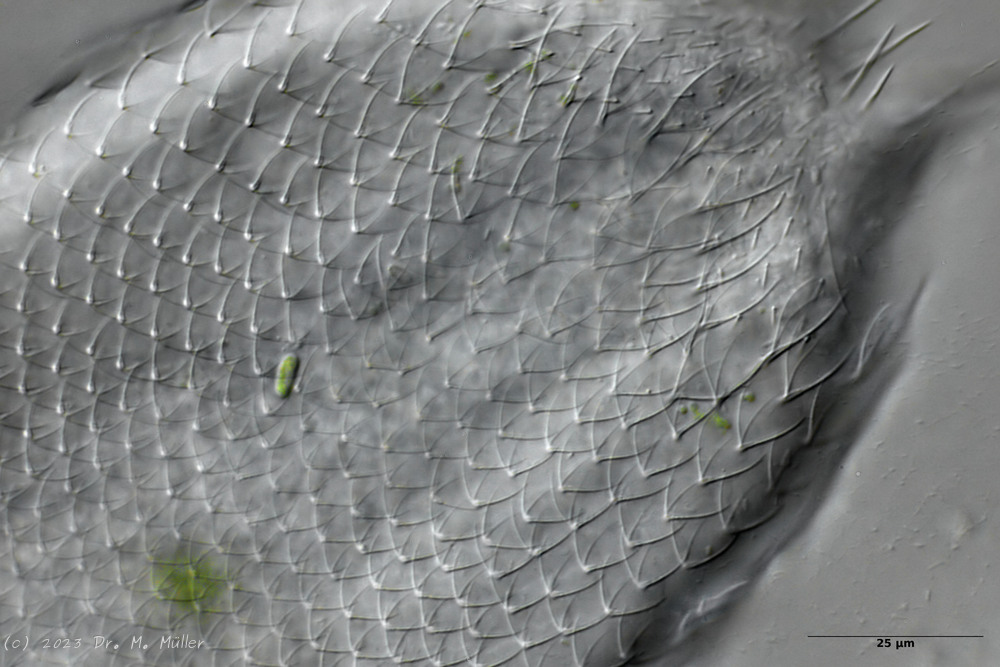 Backscales
Backscales
In the scales on the back, the rhombic shape of the end plates is most clearly recognizable. Less conspicuous - but typical for the species - is the central keel of the scales.

Cross section shed
In cross-section, the complex geometry of the stem scales becomes clear - base plate, stem and end plate form a very flexible and stable armor. The additional cavity under the outer scales acts like a “crumple zone” and further increases the protective effect.
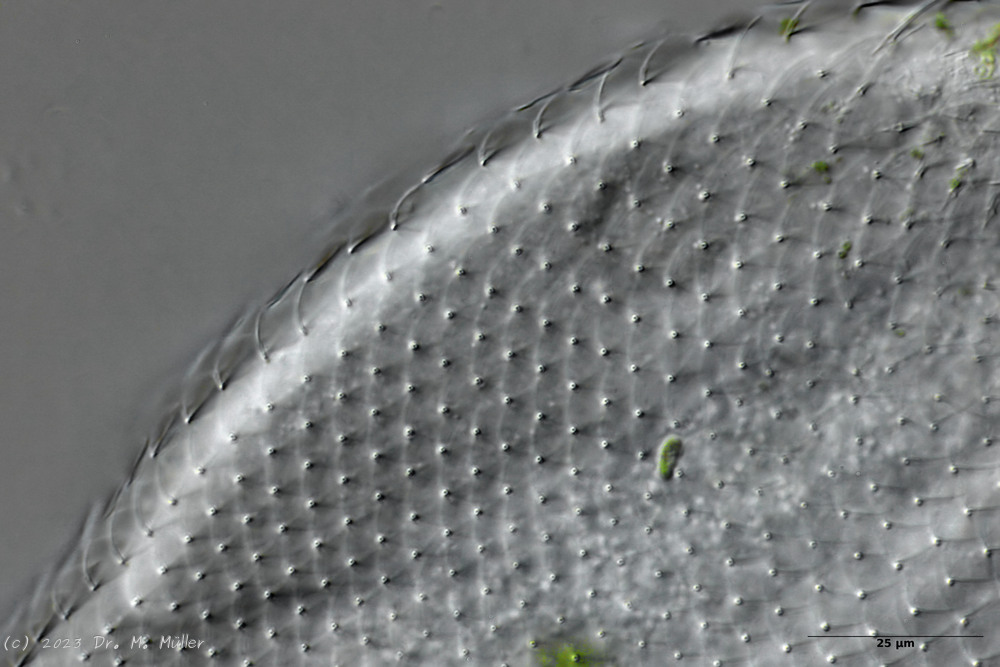 Cross section scale stems
Cross section scale stems
The stems of the scales consist of hollow tubes that ensure maximum stability with minimum material input - a fascinating example of evolutionary optimization.
The abdomen of the animals is not completely covered with petiolar scales. Rather, they end in the anal region and are joined by simple small, rounded keel scales that are not an obstruction to feces.
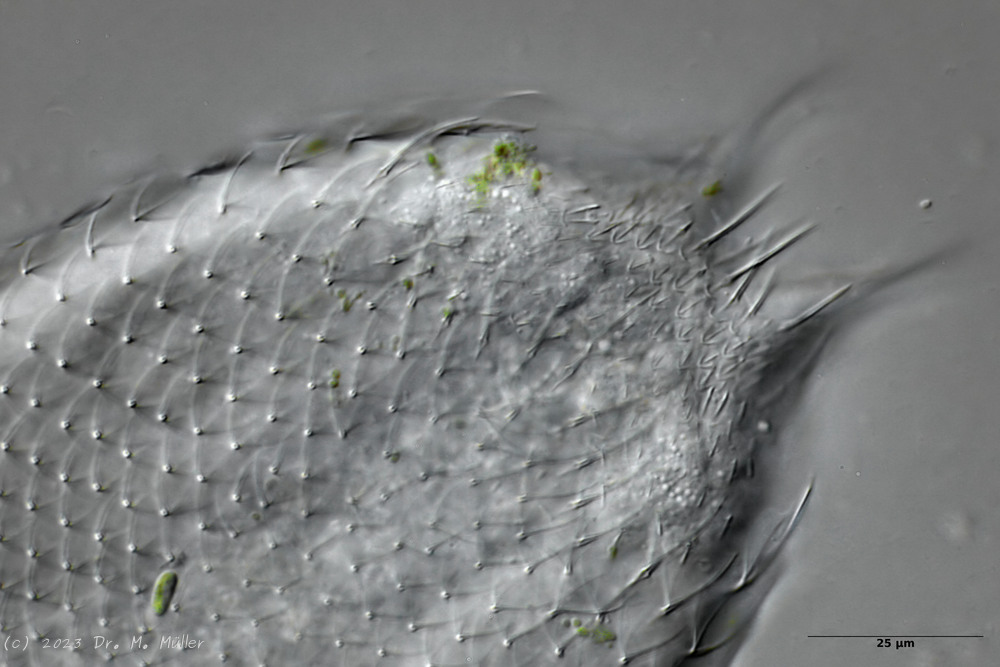
Scaling of the abdomen.
At the base of the furca some (according to literature 4) spines protrude into the toe.
The head is almost completely covered with slightly smaller peduncle scales:

Headshed
Cephalion and pleurae are quite small and inconspicuous.
According to literature A. paradoxus has three teeth in the pharynx:
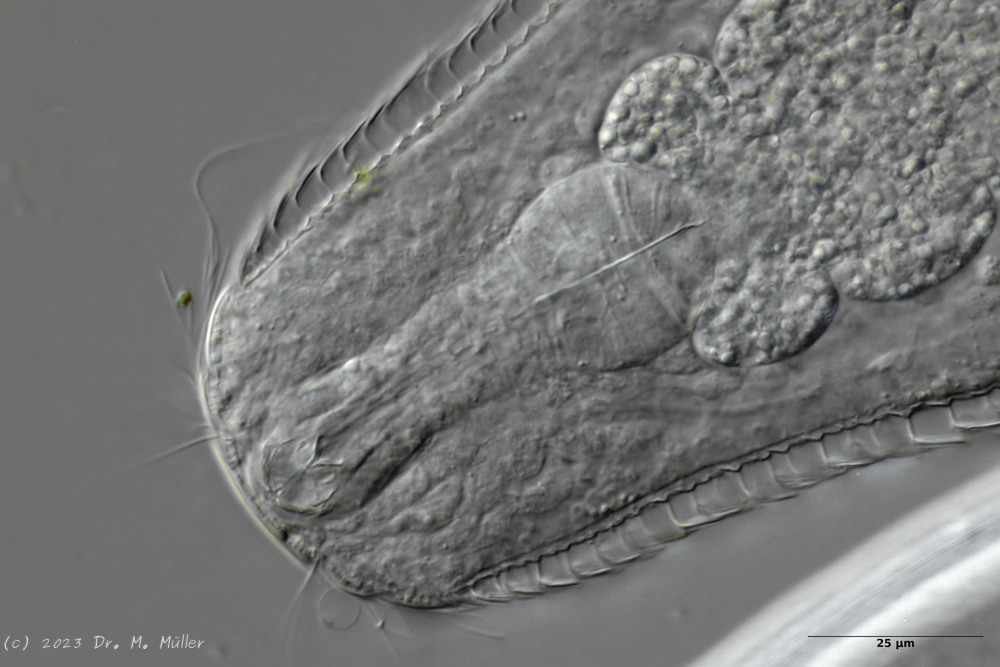
Mouth armament
In the animals I examined, there was only one curved stylet brace, the tip of which protrudes into the lumen of the pharynx and is probably used to open algal cells that are conveyed past it. It is possible that the literature reference to “three teeth” is merely based on a microscopic artifact, as the entire clasp may not be in the focal plane as a whole.
(Voigt, 1902)